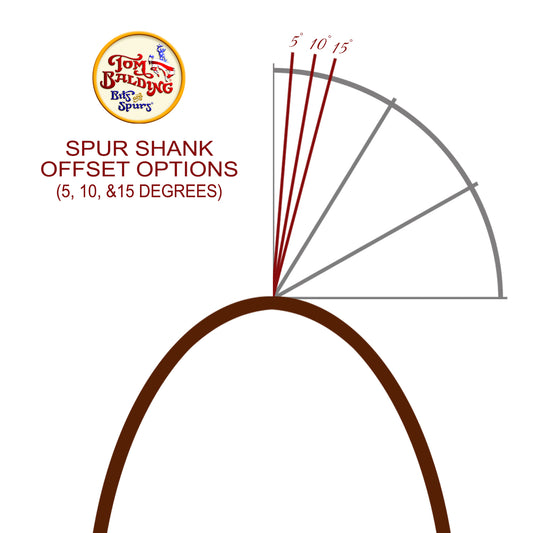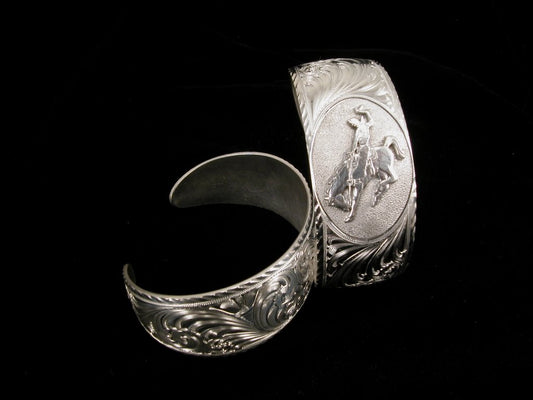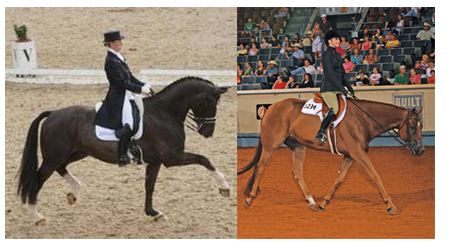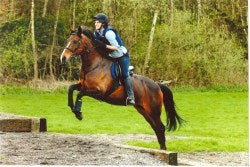News
- sales sales on "whats in your horses mouth?" ~ article by amy mclean
- sales sales on "whats in your horses mouth?" ~ article by amy mclean
- debbie on "whats in your horses mouth?" ~ article by amy mclean
- kent taylor on "whats in your horses mouth?" ~ article by amy mclean
- red bottoms shoes for women on welcome to our new blog!
Equine behavioral problems and suggested remedies
Equine Behavioral Problems And Suggested Remedies Equine behavior is an evolving science. There’s been an increased interest from researchers, especially from Europe and Australia, in how we train and manage equine in relation to their behavior. Many behavioral problems such as cribbing (wind sucking), stall weaving, or flank biting are vices, or the more current term, stereotypies that man has created based on observation. A stereotypy is an abnormal behavior that serves no function or purpose to an animal. Equine are designed to graze for long periods of time, such as 16-17 hours per day. Due to the increase in urban growth, specific restraints, and jobs we expect horses to perform, we have begun to limit the amount of time a horse spends outside including the amount of time they spend “grazing†or consuming forage. Most horses are on a strict feeding schedule that revolves around help, management, and people’s jobs therefore the animal that is use to grazing for a long period of time is now restricted to consuming one, or possibly two, large meals twice a day at very specific times. Feeding horses on a strict routine often increases anxiety and unwanted behaviors like pawing or walking continuously...
Read MoreEquine behavioral problems and suggested remedies
Equine Behavioral Problems And Suggested Remedies Equine behavior is an evolving science. There’s been an increased interest from researchers, especially from Europe and Australia, in how we train and manage equine in relation to their behavior. Many behavioral problems such as cribbing (wind sucking), stall weaving, or flank biting are vices, or the more current term, stereotypies that man has created based on observation. A stereotypy is an abnormal behavior that serves no function or purpose to an animal. Equine are designed to graze for long periods of time, such as 16-17 hours per day. Due to the increase in urban growth, specific restraints, and jobs we expect horses to perform, we have begun to limit the amount of time a horse spends outside including the amount of time they spend “grazing†or consuming forage. Most horses are on a strict feeding schedule that revolves around help, management, and people’s jobs therefore the animal that is use to grazing for a long period of time is now restricted to consuming one, or possibly two, large meals twice a day at very specific times. Feeding horses on a strict routine often increases anxiety and unwanted behaviors like pawing or walking continuously...
Read MoreBack to Basics ~ The function of a Bit
Back to Basics ~ The Function Of A Bit History has shown that horses were first controlled by rope or rawhide being placed over the bridge of their nose and pressure was exerted on the nose to gain control. Later, the idea of placing antler or bone inside the horse’s mouth became a new mechanism of controlling this large animal. Over time as civilization developed and people had access to other materials the idea of the bit, resembling bits that we know today, was born. The Romans were the first to develop something similar to a snaffle bit, rings on the side with various mouth pieces, some broken and others not. Some bits also included rings that either went over the nose of the horse, similar to a combination bit today that exerts pressure on both the nose, the bars, corner of the mouth and the chin. Other “ring†bits, commonly used by the Spanish later on, had a ring that went under the chin. As horsemanship started gaining in popularity during the Renaissance period, methods of controlling and equipping horses with tack began to take on a new and more humane approach. Also, during this time period the idea...
Read MoreBack to Basics ~ The function of a Bit
Back to Basics ~ The Function Of A Bit History has shown that horses were first controlled by rope or rawhide being placed over the bridge of their nose and pressure was exerted on the nose to gain control. Later, the idea of placing antler or bone inside the horse’s mouth became a new mechanism of controlling this large animal. Over time as civilization developed and people had access to other materials the idea of the bit, resembling bits that we know today, was born. The Romans were the first to develop something similar to a snaffle bit, rings on the side with various mouth pieces, some broken and others not. Some bits also included rings that either went over the nose of the horse, similar to a combination bit today that exerts pressure on both the nose, the bars, corner of the mouth and the chin. Other “ring†bits, commonly used by the Spanish later on, had a ring that went under the chin. As horsemanship started gaining in popularity during the Renaissance period, methods of controlling and equipping horses with tack began to take on a new and more humane approach. Also, during this time period the idea...
Read More
SPUR SHANK OFFSET OPTIONS
Spur Shank Offset Options Did you know that you can order your spurs with an offset shank? Just mention the degree of offset you are looking for when placing your order with our friendly staff by phone or email. If you are ordering off of our website just follow up with an email indicating you would like an offset shank and the degree of offset you would like. "What are the benefits of an offset spur shank" you ask. Great question! If you have a hard time touching the horse with a straight shank an offset shank will allow a more direct contact with less effort. The harder it is for you to reach the horse with a straight shank the more you will want to increase the degree of the angle on the offset. We recommend not exceeding a 15 degree offset to keep the motion needed to create contact from becoming awkward. We have customers who have injuries that make it hard to turn their foot when riding. We have put the offset on just one spur or both depending on the need to allow them the ability to ride in comfort. If you have any questions about spur shank offsets please let...
Read MoreSPUR SHANK OFFSET OPTIONS
Spur Shank Offset Options Did you know that you can order your spurs with an offset shank? Just mention the degree of offset you are looking for when placing your order with our friendly staff by phone or email. If you are ordering off of our website just follow up with an email indicating you would like an offset shank and the degree of offset you would like. "What are the benefits of an offset spur shank" you ask. Great question! If you have a hard time touching the horse with a straight shank an offset shank will allow a more direct contact with less effort. The harder it is for you to reach the horse with a straight shank the more you will want to increase the degree of the angle on the offset. We recommend not exceeding a 15 degree offset to keep the motion needed to create contact from becoming awkward. We have customers who have injuries that make it hard to turn their foot when riding. We have put the offset on just one spur or both depending on the need to allow them the ability to ride in comfort. If you have any questions about spur shank offsets please let...
Read More
HAND ENGRAVING PROCESS
Hand Engraving Process All of our engraved sterling silver is individually hand engraved. It takes great talent to create the miniature masterpieces. We use hand engraved silver on our bits, spurs, jewelry, and accessories. Check out the photos and video below to see firsthand the detail and process. Please note the video is not our engraving but our process is the same. To view video:
Read MoreHAND ENGRAVING PROCESS
Hand Engraving Process All of our engraved sterling silver is individually hand engraved. It takes great talent to create the miniature masterpieces. We use hand engraved silver on our bits, spurs, jewelry, and accessories. Check out the photos and video below to see firsthand the detail and process. Please note the video is not our engraving but our process is the same. To view video:
Read More"Equine Dental Care for Performance Horses" ~ A...
Equine Dental Care for Performance Horses Have you had your horse’s teeth floated lately? Most veterinarians will recommend having your horse’s teeth floated at least once a year. Some horses may require their teeth be floated more often especially if your horse works for a living. Floating refers to filing the sharp points off the molars and some times the incisor teeth. The incisors are the teeth located in the front often used to tell the age of the horse and the molars are found in the back along the top and bottom jaw. When a horse chews grass or hay, the jaws (mandibles) move side to side and during this movement sharp points can develop along the arcade of teeth in both the incisors and molars. Generally, most horses’ top jaw will tend to be slightly longer than the under jaw but a severe difference may create additional problems especially in regards to the horse chewing or masticating it’s food and even issues with where the bit may sit when riding a horse with such genetic deformities as being parrot or monkey mouth.1 Monkey mouth is where the under jaw is longer than the top. The every day wear...
Read More"Equine Dental Care for Performance Horses" ~ A...
Equine Dental Care for Performance Horses Have you had your horse’s teeth floated lately? Most veterinarians will recommend having your horse’s teeth floated at least once a year. Some horses may require their teeth be floated more often especially if your horse works for a living. Floating refers to filing the sharp points off the molars and some times the incisor teeth. The incisors are the teeth located in the front often used to tell the age of the horse and the molars are found in the back along the top and bottom jaw. When a horse chews grass or hay, the jaws (mandibles) move side to side and during this movement sharp points can develop along the arcade of teeth in both the incisors and molars. Generally, most horses’ top jaw will tend to be slightly longer than the under jaw but a severe difference may create additional problems especially in regards to the horse chewing or masticating it’s food and even issues with where the bit may sit when riding a horse with such genetic deformities as being parrot or monkey mouth.1 Monkey mouth is where the under jaw is longer than the top. The every day wear...
Read More
"YOUR HORSES PERFORMANCE" ~ ARTICLE BY AMY MCLEAN
How conformation and tack can affect your horse’s performance "When purchasing a horse, it’s fair to say that most buyers want to purchase a horse breed to do the event of their choice. For example if you are interested in horse racing then you would tend to purchase a Thoroughbred or Quarter Horse (that’s specifically “race bredâ€) or if you are into cattle events then you may purchase a horse that has bloodlines from award winning cutting horses. How a horse is built can affect how well the horse can perform its job at hand. If you are interested in cutting then choosing a tall, lanky horse like a Thoroughbred may not be the wisest decision. That’s not to say other breeds cannot excel or perform in events they were not bred for but one should take into account the physical demand of the event. How much strain physically placed on a horse’s limbs, joints, soft tissue, long and short bones will depend on the demands of the event. Performance is often compromised when horses experience pain associated with their job. A study in Germany demonstrated that dressage horses with a more horizontal shoulder and vertical pelvis showed the greatest...
Read More"YOUR HORSES PERFORMANCE" ~ ARTICLE BY AMY MCLEAN
How conformation and tack can affect your horse’s performance "When purchasing a horse, it’s fair to say that most buyers want to purchase a horse breed to do the event of their choice. For example if you are interested in horse racing then you would tend to purchase a Thoroughbred or Quarter Horse (that’s specifically “race bredâ€) or if you are into cattle events then you may purchase a horse that has bloodlines from award winning cutting horses. How a horse is built can affect how well the horse can perform its job at hand. If you are interested in cutting then choosing a tall, lanky horse like a Thoroughbred may not be the wisest decision. That’s not to say other breeds cannot excel or perform in events they were not bred for but one should take into account the physical demand of the event. How much strain physically placed on a horse’s limbs, joints, soft tissue, long and short bones will depend on the demands of the event. Performance is often compromised when horses experience pain associated with their job. A study in Germany demonstrated that dressage horses with a more horizontal shoulder and vertical pelvis showed the greatest...
Read MoreIn Your Words...
In Your Words... We love blogging a variety of fun and useful information for you to read and enjoy. However, this week we want to hear about Tom Balding Bits & Spurs in your words! Please take a quick moment and let us know about your experience, opinion, suggestions, and thoughts of Tom Balding Bits & Spurs. We take all feedback we receive very seriously and cannot put in words how thankful we are of our wonderful customers and fans. We will select our favorite quote to be featured on our Facebook cover image! We are eagerly awaiting your comments…
Read MoreIn Your Words...
In Your Words... We love blogging a variety of fun and useful information for you to read and enjoy. However, this week we want to hear about Tom Balding Bits & Spurs in your words! Please take a quick moment and let us know about your experience, opinion, suggestions, and thoughts of Tom Balding Bits & Spurs. We take all feedback we receive very seriously and cannot put in words how thankful we are of our wonderful customers and fans. We will select our favorite quote to be featured on our Facebook cover image! We are eagerly awaiting your comments…
Read More
Blog To Blog - Sarah Walker
Blog To Blog We thought you might enjoy a blog from a fellow blogger. Sarah called in and spoke to Tom and created her blog entry. She is an freelance journalist specialising in equestrian and country lifestyle topics in the UK. We really enjoyed working with her and hope you enjoy her blog post below. ~*~*~*~*~*~*~*~*~*~*~*~*~*~*~*~*~*~*~*~*~*~*~*~*~*~*~*~*~*~*~*~*~ Spurred on to greater success - an interview with Tom Balding "Ever wondered how those beautiful, extravagant bits and spurs used in Western riding are made? I caught up with Tom Balding, America's premier manufacturer of high-quality bits and spurs, for some inside information. With his soft, drawling accent and laconic delivery, Tom Balding, eponymous proprietor of Tom Balding Bits and Spurs, sounds to my British ears as though he's just stepped off the set of a Western movie. It comes as a surprise, therefore, to learn he's actually from Southern California, and has a background in precision manufacturing. "I had my own manufacturing business," he explains, "and in 1980 I decided to quit and try my hand as a cowboy. I moved to Sheridan, Wyoming, bought and trained a young horse and worked on ranches, hauling hay and doing anything else you can think...
Read MoreBlog To Blog - Sarah Walker
Blog To Blog We thought you might enjoy a blog from a fellow blogger. Sarah called in and spoke to Tom and created her blog entry. She is an freelance journalist specialising in equestrian and country lifestyle topics in the UK. We really enjoyed working with her and hope you enjoy her blog post below. ~*~*~*~*~*~*~*~*~*~*~*~*~*~*~*~*~*~*~*~*~*~*~*~*~*~*~*~*~*~*~*~*~ Spurred on to greater success - an interview with Tom Balding "Ever wondered how those beautiful, extravagant bits and spurs used in Western riding are made? I caught up with Tom Balding, America's premier manufacturer of high-quality bits and spurs, for some inside information. With his soft, drawling accent and laconic delivery, Tom Balding, eponymous proprietor of Tom Balding Bits and Spurs, sounds to my British ears as though he's just stepped off the set of a Western movie. It comes as a surprise, therefore, to learn he's actually from Southern California, and has a background in precision manufacturing. "I had my own manufacturing business," he explains, "and in 1980 I decided to quit and try my hand as a cowboy. I moved to Sheridan, Wyoming, bought and trained a young horse and worked on ranches, hauling hay and doing anything else you can think...
Read More